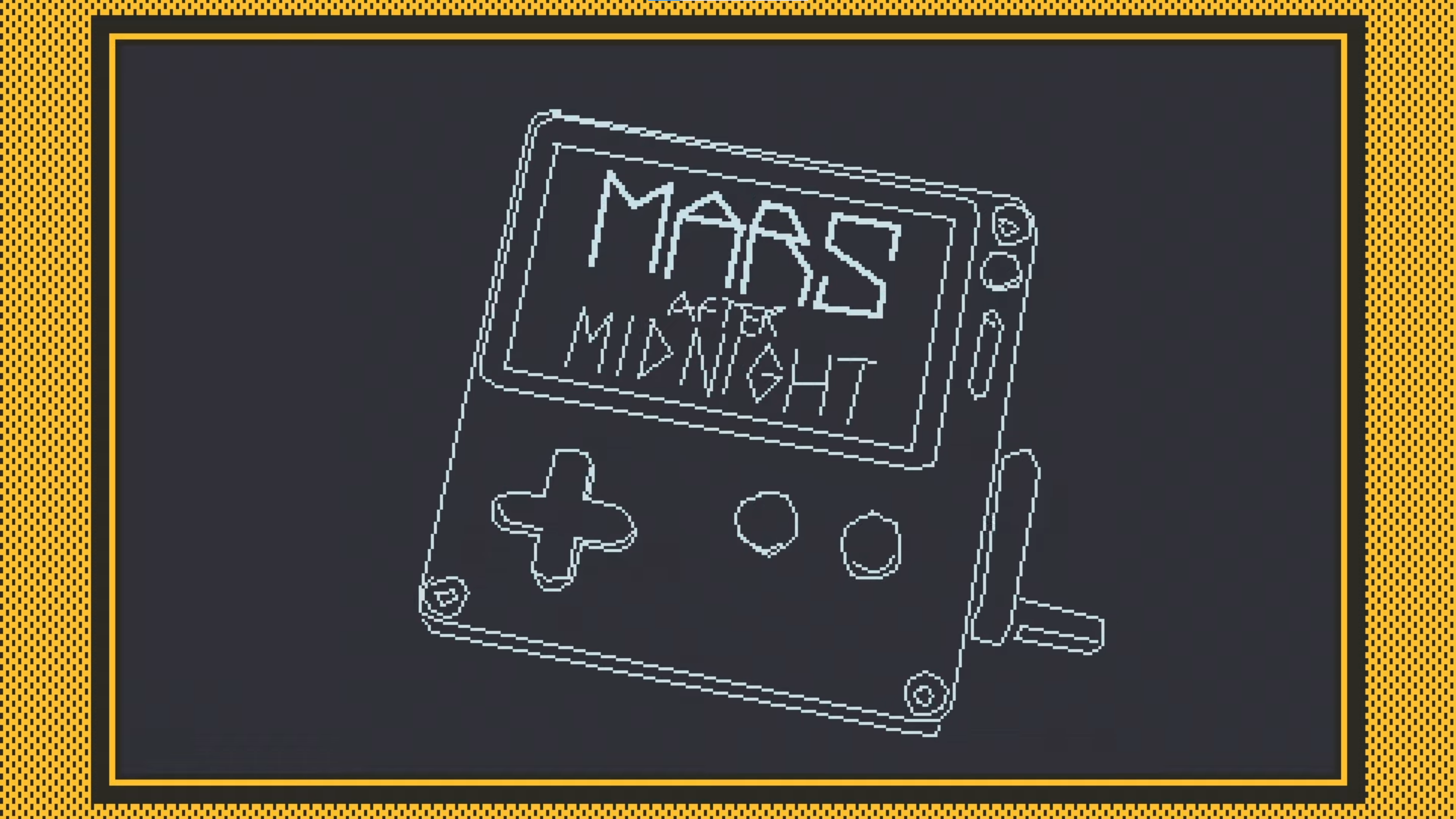Developer Lucas Pope / 3909 LLC • Publisher Lucas Pope / 3909 LLC • Release March 12 • Reviewed On Playdate
To those who like to skip past all the blahblah and scroll down to the bottom of reviews to check out the score, I apologize. I’ve certainly been guilty of cutting to the chase when reading a review of a really exciting game, and I’m taking that away from you today. Despite this being a review, there is no score.
Mars After Midnight confounds me. I would wholeheartedly recommend it to anyone with a Playdate. In fact, I think it’s the best game the handheld has to offer. I believe the developer, Lucas Pope, accomplished what he set out to do with the title — making a playful, diverting gaming that dances with the platform’s mechanics in imaginative ways. All of this would lead me to score the game highly.
However, there is a caveat woven into the paragraph above that’s important to note. I recommend it to players that already own a Playdate. My thoughts on the mighty, tiny yellow machine will come soon, but it doesn’t take too long to figure out it is limited — that may even be part of its appeal. While that restriction can make for a hotbed of creative games, it can also make even its best game feel insubstantial. And it certainly makes it difficult for me to award an accurate-feeling number to the tite.

The game plays out much like the first mission I checked out last year at Day of the Devs. I — a wiggly-armed, three-eyed, bird-beaked alien — set out to make my fellow Martians their best selves. My partner is a robotic lecturer whose programing allows me to insert various self-help courses via cartridge into its body to aid extraterrestrials in various ways. The partnership is a fun interplay of my planning, cleaning, and bouncer-like skills combined with my electronic companion’s downloaded expertise in oration.
The flow runs mostly like this: I begin by choosing a theme of my gathering from a list. These inject a hearty amount of humor, as the options include things like receptions for the ESP-gifted or support groups for farty Martians. I decide what refreshments to serve and approve the promotional materials’ locations.
All of this requires me to balance my budget — which never seems overflowing — with attracting those in need. A fish-like alien delicacy may appeal to a larger audience, but it also costs more. Likewise, a poster in the nicer part of the colony will run the budget up higher than one in the outskirts. Spending too much on tonight’s event could mean a poor showing the following night, though keeping everything on track rarely burdened me.

The real action of the game comes when the doors open. As the doorman and host, I welcome, or deny entry to, anyone who knocks on the door, and make sure the snack table is neat. I get tips for good service as well as the lecture’s helpfulness – and it will only be helpful if I let in the correct individuals.
Another really fun element of the game is how I determine who to allow in. During my session for the pore-clogged, I had to purchase a spyglass to examine each would-be entrant’s skin. When I held a class for boxers, I literally tested their abilities by triggering a punching arms. The aliens that didn’t pass that test got laid out on the street, which was genuinely funny to watch. With the constantly changing method of detection and the mini-game like food table, Mars After Midnight never feels exactly the same.
But it does start to get repetitive. Every night’s actions might be different, but the basic setup of let Martians in, clean up after them, plan the next night becomes routine. The patterns gets slightly disrupted during my third seminar, a get-together for knife-wielding gnats, when someone comes to the door and simply won’t leave.

This figure, whose function I don’t want to spoil, threw my for something of a loop and unlocked a limited kind of storytelling, allowing me to better understand everyone around me and reach new audiences. I do want to stress that the storytelling has an extremely light touch here, contrasting my expectations of a Lucas Pope title.
The narrative oozes out of the game as I probe into it, requiring a fair amount of distillation to produce anything noteworthy. There’s largely no dialogue or descriptive cutscenes. I piece together the general state of each colony I visit by noticing that robots are sequestered into their own small, out-of-the-way section of town. Or picking up on the fact that my partner dreams frequently of a teddy bear after we go back to our domicile after a hard day’s work. I even stop in my door duties every once in a while to see watch a handyman fixing things across the street or a neighboring business’ patron vomit out its libations. My imagination can make these glimpses of the world meaningful, but the game never explicitly does.

Mars After Midnight is an absolute must-play for Playdate owners. With that said, I would have a hard time recommending anyone pick up the indie platform just to experience it. This exclusive should be a tipping point for anyone that was on the fence about picking up the handheld, as it is an amusing, if light, experience.
I recommend this game to:
- Martians
- Playdate enthusiasts
- Bouncers aiming to practice their skills
- Robots looking for stuffed animal fulfillment
- Players who want to experience a Papers, Please-lite



Leave a Reply